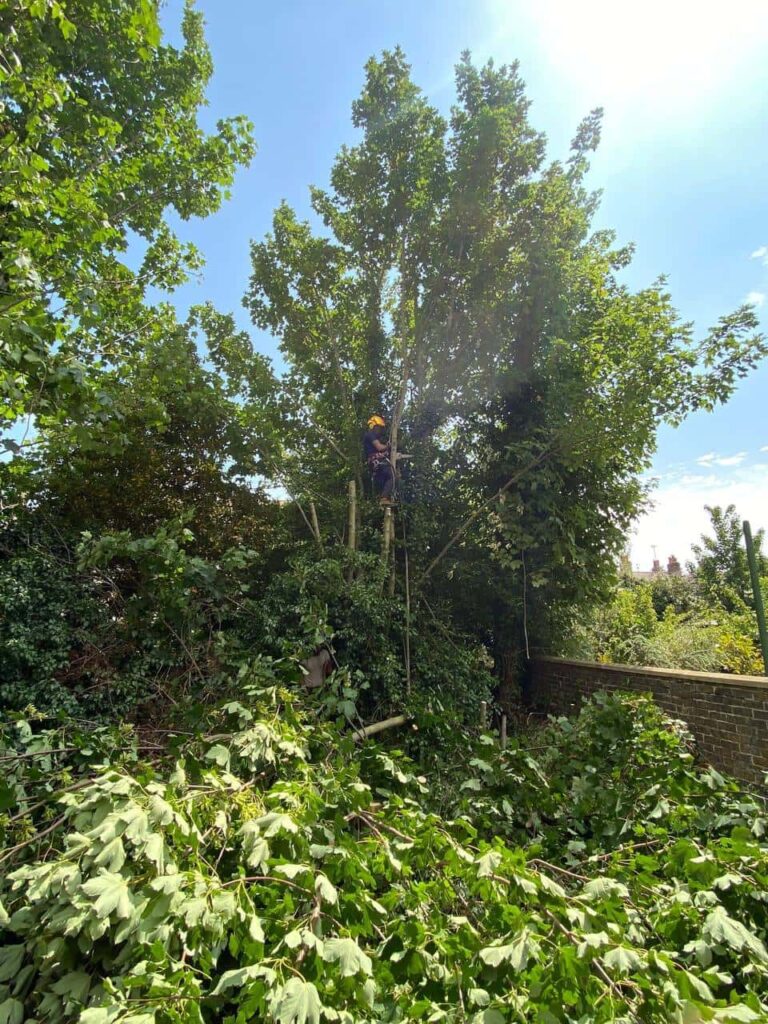Introduction: Maintaining well-manicured hedges is a key aspect of garden care, and understanding how weather conditions affect hedge cutting is essential for ensuring their health and longevity. At Eye Tree Surgeons, we know that timing and technique are crucial for optimal hedge maintenance. This blog post will explore how weather conditions impact hedge cutting and provide practical tips for achieving the best results.
The Influence of Weather on Hedge Cutting
1. Spring: Ideal for Growth and Pruning
Spring is the prime time for hedge cutting. The increased daylight and warmer temperatures encourage new growth, making it the perfect season to shape and maintain your hedges.
Tips for Spring Hedge Cutting:
- Early Start: Begin trimming in early spring before new growth starts in earnest. This helps shape the hedge and promote dense foliage.
- Light Trimming: Focus on light trimming to remove winter damage and encourage healthy growth.
- Avoid Frost: Ensure no late frosts can damage freshly cut hedges.
2. Summer: Maintenance and Light Trimming
Summer is a season of vigorous growth for most hedge plants. Regular maintenance is crucial to keep hedges neat and under control.
Tips for Summer Hedge Cutting:
- Regular Trimming: Perform regular trims to maintain shape and prevent overgrowth.
- Watering: To support healthy growth, ensure hedges are well-watered, especially during dry spells.
- Avoid Heat: Trick hedges during cooler parts of the day to prevent stress from excessive heat.
3. Autumn: Preparing for Dormancy
As temperatures begin to drop, hedges prepare for their dormant period. Autumn is a good time for a final trim to keep hedges tidy over the winter months.
Tips for Autumn Hedge Cutting:
- Final Trim: Conduct a final trim in early autumn to shape hedges and remove dead or diseased branches.
- Leaf Cleanup: Clear fallen leaves and debris around the hedge base to prevent fungal diseases.
- Avoid Heavy Pruning: Avoid heavy pruning as this can leave hedges vulnerable to winter damage.
4. Winter: Minimal Interference
Most hedges go dormant during winter. To prevent stress and damage, it is best to avoid extensive hedge-cutting during this time.
Tips for Winter Hedge Cutting:
- Light Pruning: If necessary, perform light pruning to remove damaged or dead branches.
- Protection: Protect newly planted or young hedges with mulch or protective covers from harsh winter conditions.
- Wait for Mild Days: If hedge cutting is necessary, choose mild days to reduce the risk of frost damage.
The Impact of Specific Weather Conditions
Rainy Weather:
Rain can have both positive and negative effects on hedge cutting. While it provides necessary moisture, excessive rain can hinder cutting activities and promote disease.
Tips:
- Postpone Cutting: Avoid hedge cutting during heavy rain to prevent wet foliage from spreading disease.
- Ensure Dry Conditions: Wait until hedges are dry to reduce the risk of fungal infections.
Windy Conditions:
Strong winds can make hedge-cutting challenging and potentially dangerous. They can also cause damage to freshly cut branches.
Tips:
- Safety First: Avoid cutting hedges in high winds to ensure safety and prevent damage.
- Check Stability: After storms or strong winds, inspect hedges for damage and perform necessary repairs.
Hot and Dry Weather:
Hot, dry weather can stress hedges, making them more susceptible to damage from cutting.
Tips:
- Watering: Ensure hedges are well-watered before and after cutting to reduce stress.
- Shade Trimming: Perform hedge cutting during cooler parts of the day to avoid heat stress.
Conclusion: Understanding how weather conditions impact hedge cutting is crucial for maintaining healthy and attractive hedges. By tailoring your hedge-cutting practices to the season and specific weather conditions, you can ensure that your hedges remain in top condition throughout the year.
Call us on: 01379 773 584
Click here to find out more about Eye Tree Surgeons
Click here to complete our contact form and see how we can help you with your tree’s needs.

